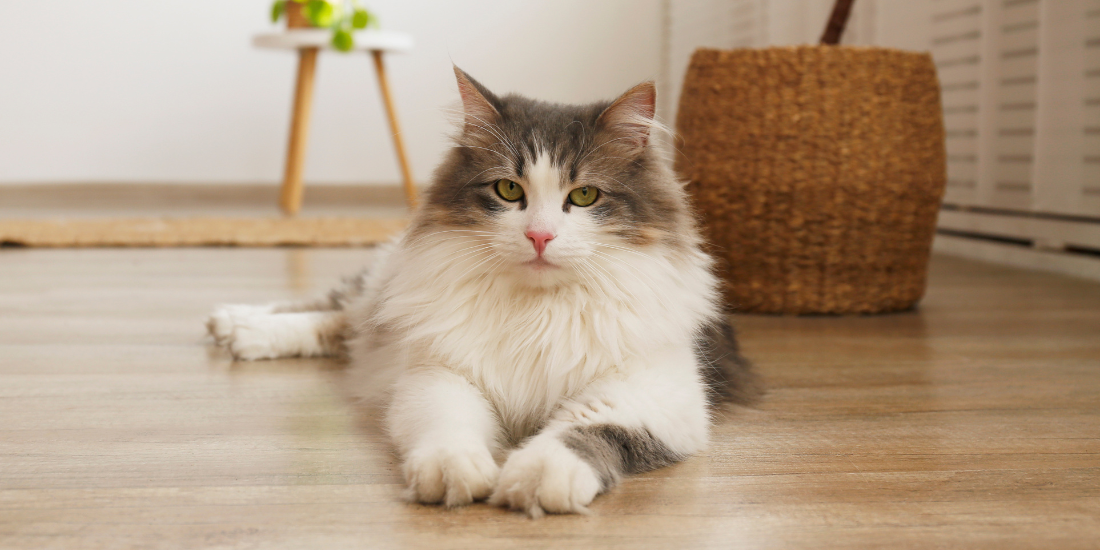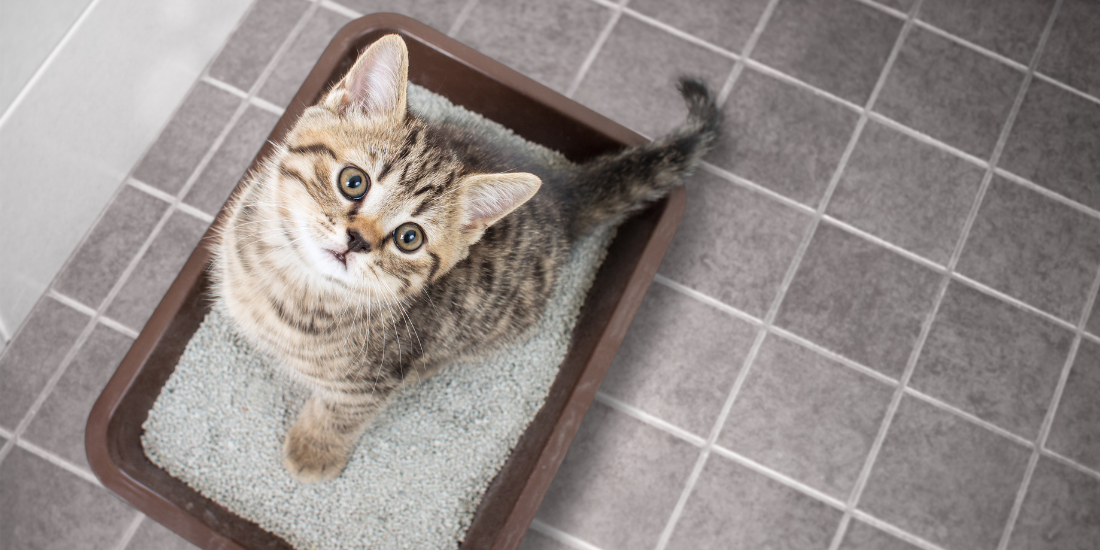
Are you ready to take your feline's fabulousness to the next level? From silky coats to sassy whiskers, we're learning the art of how to groom a cat at home. In this guide, we'll spill the secrets to keeping fur fabulous and whiskers wild. Get ready to learn the purr-spectives on brushes, bristles, and beyond.
Grooming tips depending on hair length
Short hair
Short-haired kitties may not be prone to matting, but they're not excused from the grooming party. Grab a soft bristle brush or slicker brush and aim for a grooming session about once every week or two. Not only does this pampering routine keep their coat silky smooth, but it also prevents their fur from decorating your furniture.
Medium-length
If your feline has a medium-length coat, a brush once or twice a week works wonders. Pay extra attention to those tricky-to-reach spots prone to matting – the stomach, between the legs, and the backs of the thighs. You'll have your cat looking sleek in no time.
Long-hair
Now, for our long-haired beauties, daily grooming is the name of the game. With those cascading locks, they're more susceptible to mats and debris accumulation from their outdoor adventures. Start with a wide-toothed comb to untangle any stubborn knots, then switch to a slicker brush or a firmer bristle brush for that finishing touch. Your fluffy friend will thank you for the spa treatment.
General tips for grooming your cat at home
How to deal with mats: The Feline Grooming Nemesis
When it comes to grooming, staying one step ahead is your secret weapon. If you notice any area of matted hair on your cat, it's crucial to tackle it promptly. The longer a mat lingers, the larger and more uncomfortable it becomes for your kitty. Here are some of our top tips for dealing with these tangles.
Mats aren't just unsightly; they can also tug on the delicate skin underneath, causing discomfort. Sometimes, they even harbour debris like twigs, adding to your cat's irritation. But here's the golden rule: Never reach for scissors to tackle mats! Too many cats require stitches after such attempts.
Mats tend to cling close to the skin, demanding careful removal with clippers or a de-matting comb—tools best handled by professionals. Reach out to your local vet clinic or groomer. They can expertly remove mats or even teach you the ropes if you're keen to learn for at-home maintenance.
Brush regularly
How long does it take to groom a cat? Remember, prevention trumps cure in the battle against mats. Regular brushing reduces the chance of mats taking hold and will save you time in the long run. Some savvy cat parents opt for a summer clip at their vet or groomer's, which not only keeps their furball cooler in warm weather but also makes them less prone to matting. It's a win-win for a happier, comfier kitty during those scorching months.
Trimming Cat Nails: A Gentle Paw-spective
Nails, those tiny but oh-so-important feline accessories, deserve some love too. Now, most adult cats won't fuss about nail trims unless they moonlight as couch and curtain terrors. However, as your beloved furball ventures into their senior years, nail maintenance becomes vital.
In their golden years, cats may face challenges like difficulties retracting their nails, which also tend to thicken with age. Regular paw and nail inspections are your first line of defence. Spotting overgrown nails before they embed into those precious paw pads is crucial—trust us, it's a painful experience for them.
For stress-free nail care, your local vet clinic or groomer is just a call away. They can trim those nails with finesse and even show you the ropes for at-home maintenance. Investing in cat-specific nail clippers is a good idea. Thankfully, unlike a lot of dogs, who are sporting black nails, cats have transparent ones. This makes it much easier to see the quick which you need to avoid. Typically, you're just trimming the slender, sharp tip. So, keep those paws in tip-top shape, and your kitty will thank you with a happy, pain-free stride.
Hairball Hassles
Not all cats adore brushing sessions, and some, despite your best efforts, may still wage war with hairballs—those unsightly sausage-shaped fur clumps that cats throw up! But fear not, there are some effective preventatives to try, reducing both the fur fury and your cleanup duties.
Enter the heroes: laxative paste specifically designed for cats. You can either smear it on their front leg for a self-licking session or let some adventurous kitties take a fancy lick straight from the tube. Just keep an eye out to prevent overindulgence, as too much could lead to an unwanted bout of diarrhea. This paste is your feline's ally in smoothly moving hair through the digestive tract, preventing those unpleasant returns.
Additionally, consider 'hairball' diets specially formulated to combat this furry nemesis. For the best approach tailored to your cat, consult your trusted vet clinic. Say goodbye to hairball havoc and hello to a cleaner, happier home!
Pesky Fleas and Ticks
Flea or just dirt? That's the question, and a fine-toothed flea comb will help you answer it. After untangling any knots during a grooming session, give your cat's coat a once-over with this specialised comb. You might spot live fleas or flea dirt. But here's the trick: to distinguish between flea dirt and ordinary grime, place a bit of it on a damp white paper towel or cloth. If it leaves a reddish stain, you've unmasked the villain – it's flea dirt. This reddish tint arises because flea dirt is a blend of flea waste and blood meal.
When it comes to flea and tick treatment, prevention reigns supreme. Dealing with a full-blown flea infestation or confronting tick paralysis is no one's idea of a good time. Ensure you conduct a daily spot check of your cat's coat, especially in areas with a higher tick presence. Fortunately, a variety of products exist to thwart these tiny terrors, with the two primary types being topical treatments (applied to the back of your cat's neck) and collars. Consult your vet clinic to determine the best-suited treatment for your feline friend. Once chosen, mark your calendar to stay on top of your cat's preventive care.
Keeping It Light and Clean
While cats are renowned for their flexibility and self-grooming prowess, the truth is that larger cats might face some grooming challenges, especially if they've embraced their curvier side. Those extra pounds can hinder their ability to reach certain grooming nooks and crannies.
For medium to long-haired cats dealing with the unpleasant issue of bowel motions sticking to the fur around their legs and bottom, maintaining hygiene is paramount. In such cases, periodic trimming of the nether regions can be a wise move. By cat grooming at home, you'll help your kitty stay clean and comfortable, ensuring they always strut their stuff with confidence and style.
The Path to Cat Confidence
Remember, whether your furball rocks short, medium, or long locks, a little grooming TLC goes a long way. Regular brushing, vigilant mat prevention, nail maintenance, and smart hairball management are all part of the glamorous package. And let's not forget the essential flea and tick defence.
So, pamper your feline diva, and watch them shine with confidence. Because in the world of cat grooming, the motto is clear: When your cat feels fabulous, they'll strut their stuff!

About The Author
Bex Falloon
Veterinary Nurse | Pets: Ted (Domestic Longhaired Tabby Cat) & Frankie (Cavoodle)
I have 19 years experience in the Veterinary industry. I started as a Vet Nurse in a small animal practice where I developed my love for hospital care, anaesthesia and looking after elderly patients. After 9 years I moved into a Practice Manager role where I was able to broaden my skills to include more customer care, overall business management and leading a wonderful and caring Veterinary team. More recently I am working with the Virtual Vet Nurse team, implementing great ways to increase efficiencies, especially on the front desk, of Vet Clinics, which has been fantastic! My love for pets and the bond they have with their owners is why I am passionate about pet care. Being able to share my knowledge with owners on how to do the best for their beloved companions is such a privilege.
Enjoyed This?
Explore more ....


Soothing Your Cat's Itchy Skin: Effective Treatments and Care

Litter Box Basics for Beginners: Tips Every Cat Owner Should Know
